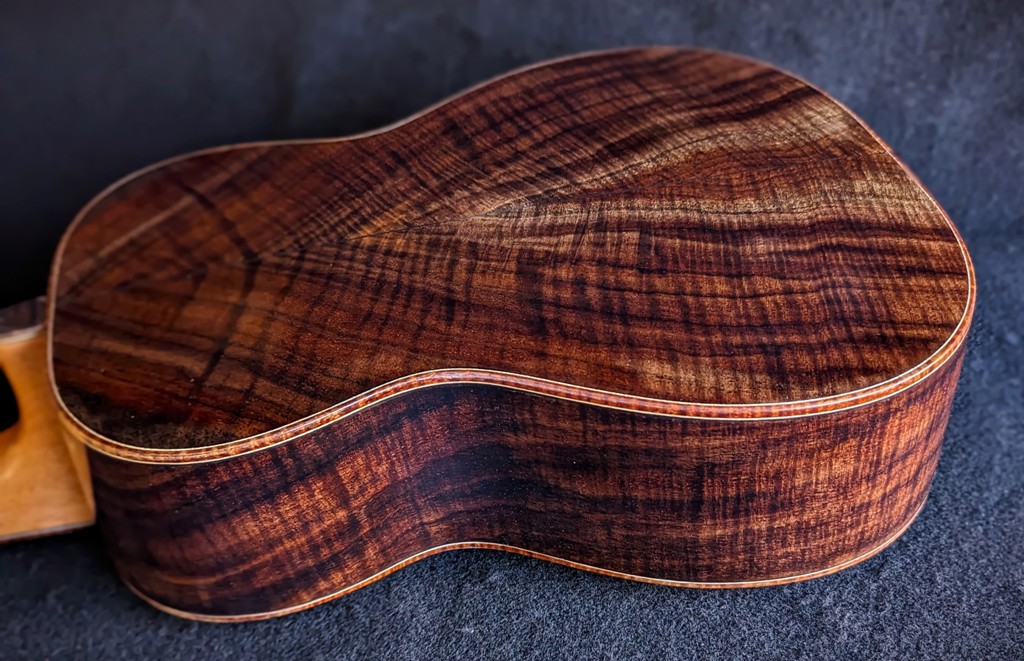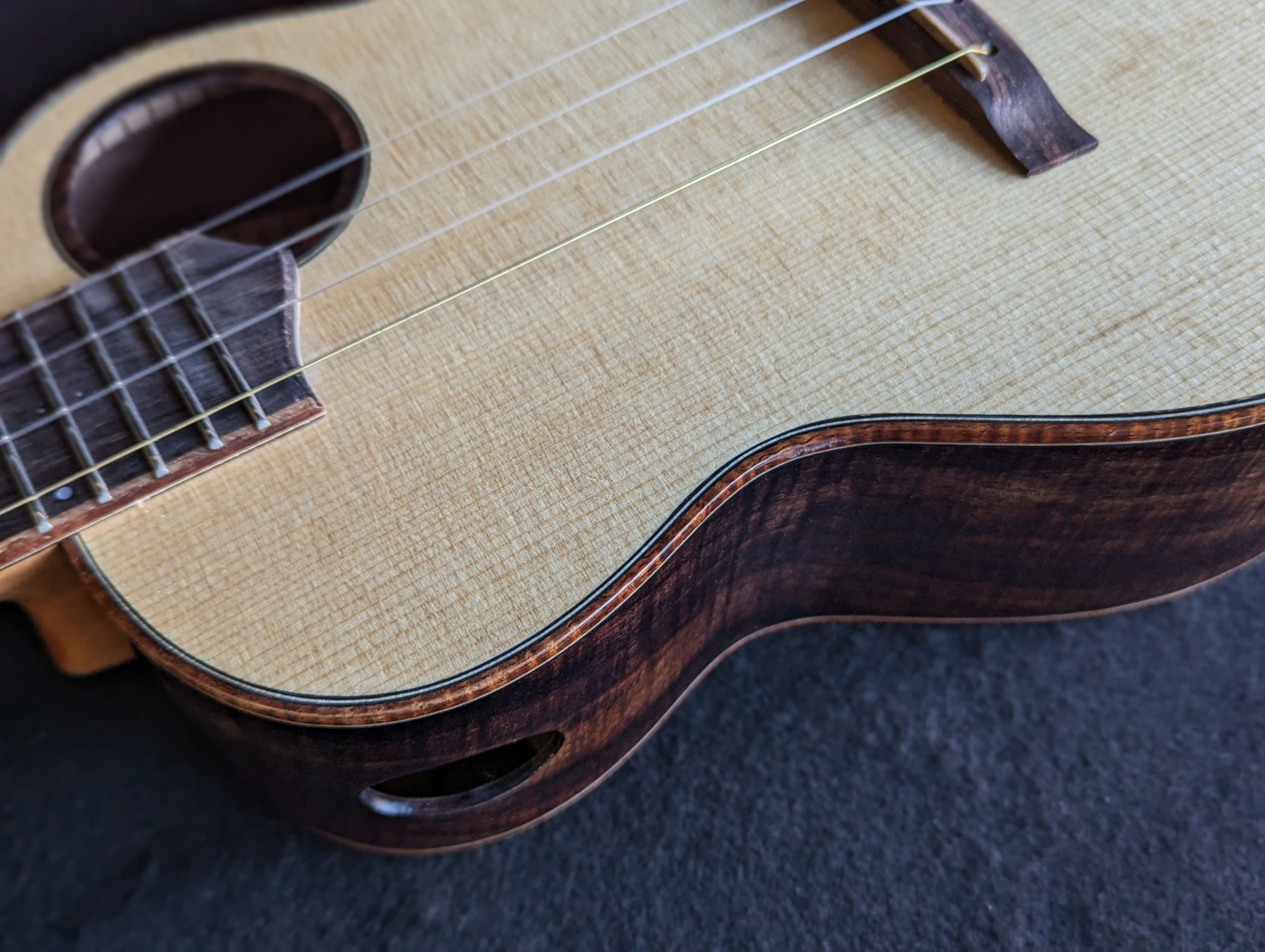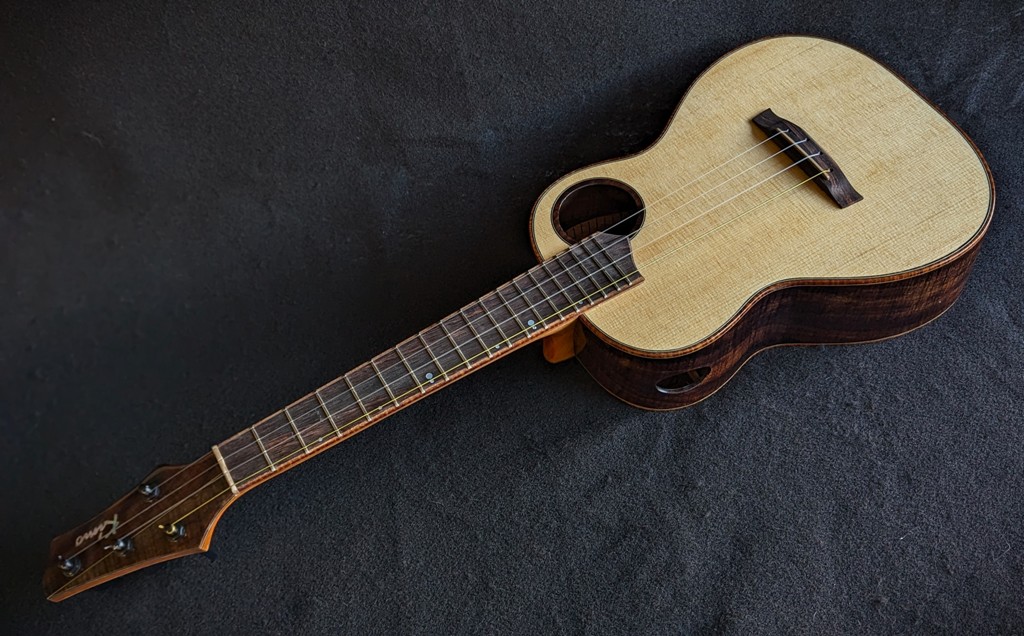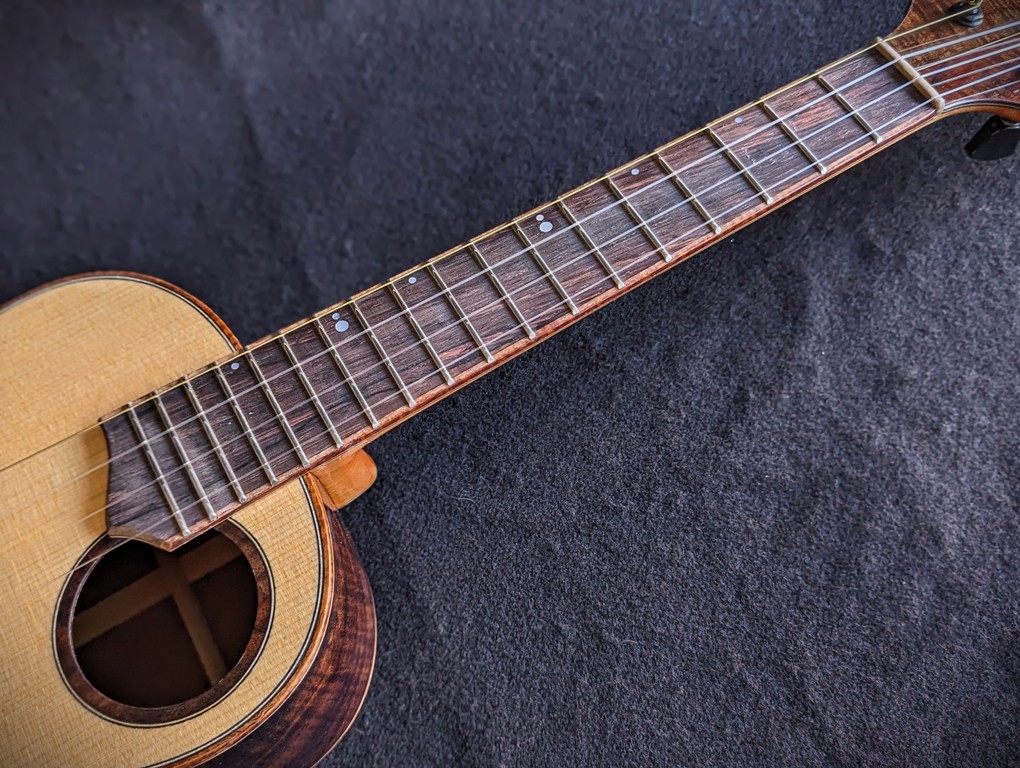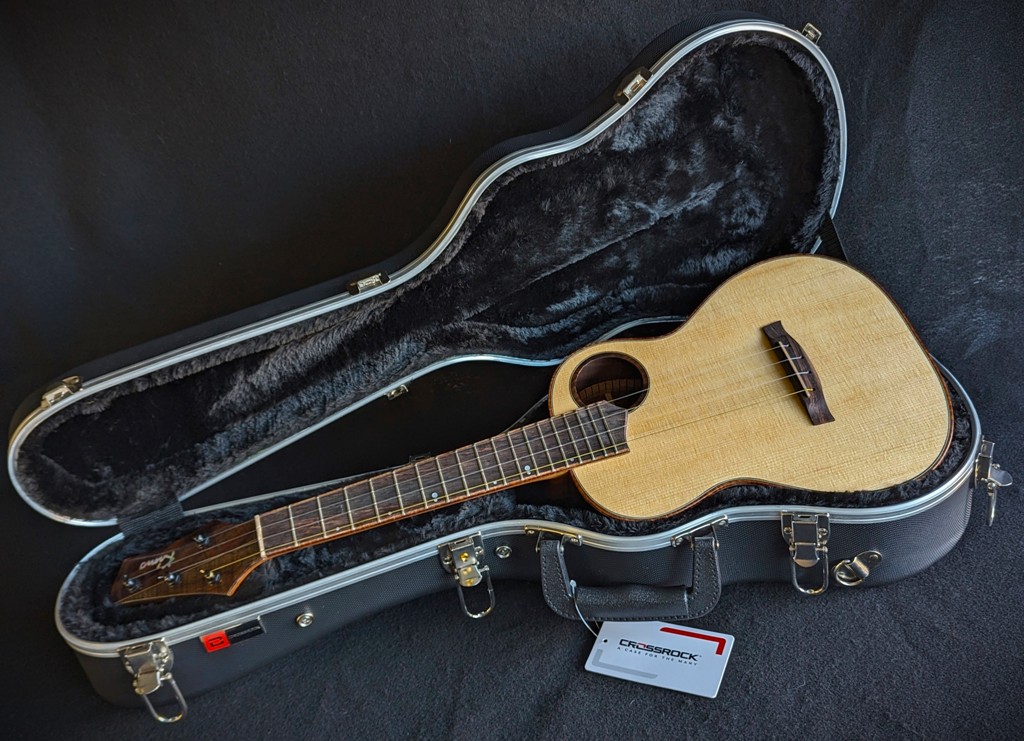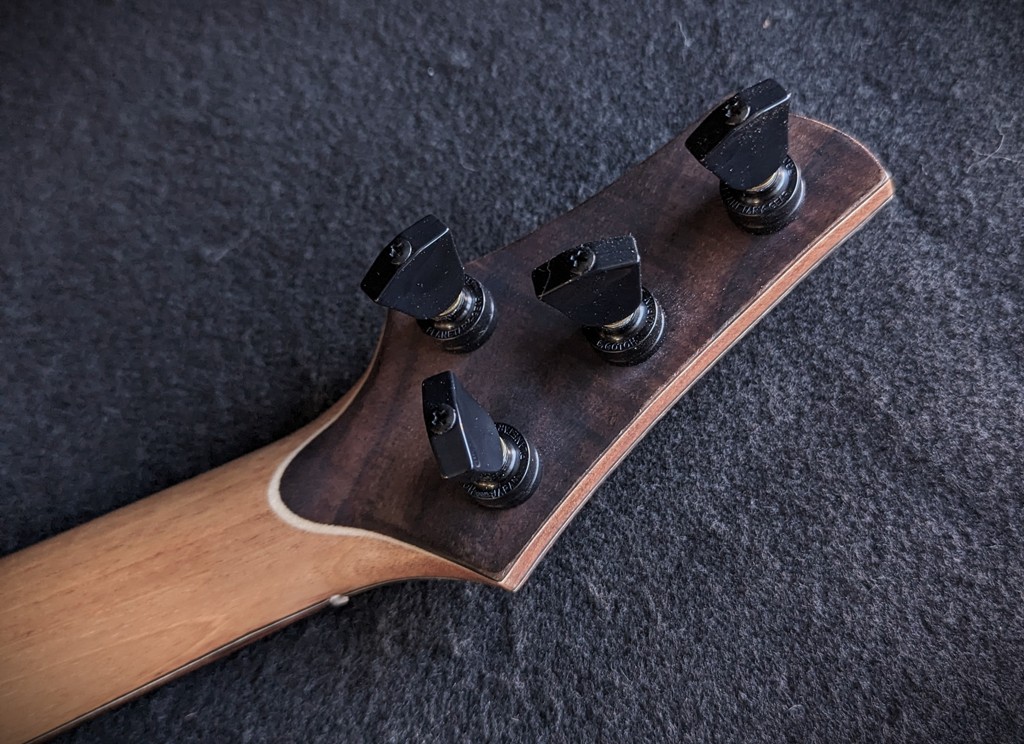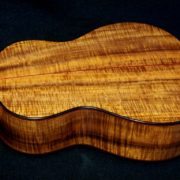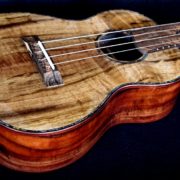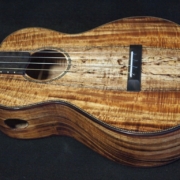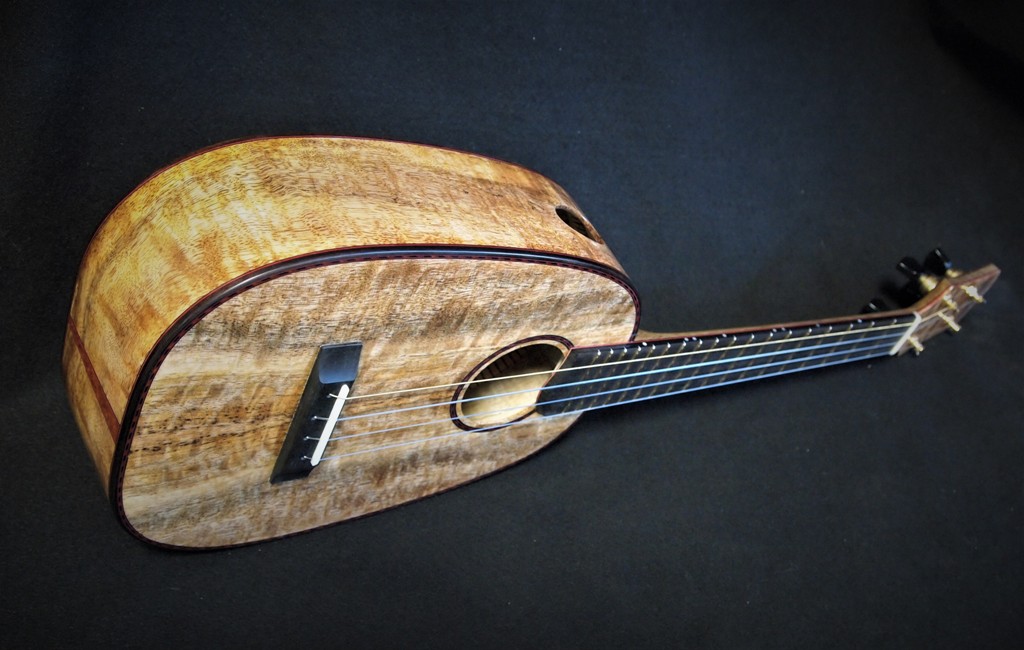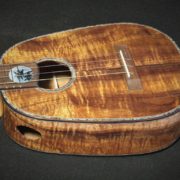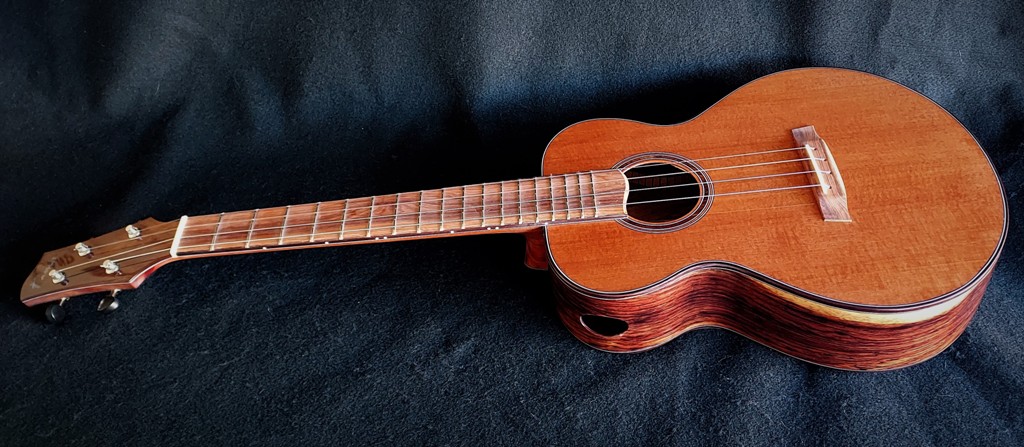Claro Walnut Tenor Ukulele - Sold
NEXT: Claro Walnut Tenor Ukulele. This is a standard tenor.
It’s All About The Wood
Back and Sides: Curly, colorful California Claro Walnut. This is just about as good as it gets in the Walnut catagory. Claro walnut might be considered a little too mid-range for guitars but makes for a great ukulele when you consider the low tension strings that are used. This still ranks as one of my favorites.
Top: Old Growth Spruce. This spruce might be about 60 years old from a major guitar manufacturer. This is the second instrument I’ve made using this wood and I’ve decided that it definitely has a different tone. Tap tone is great and the final is an instrument that is a bit brighter and more focused than other less aged spruces.
Fret Board and Bridge: Brazilian Rosewood. Hey, when you’ve got it, flaunt it! This wood is from a local suppliers personal stash. I know that he has had this wood in his collection for at least 40 years plus. Can’t hold onto it forever. Turns out that the pieces aren’t big enough for guitars but perfect for ukes! Radius is now my standard.
Neck: Honduran mahogany with carbon truss rod.
Accent Woods: curly Hawaiian Koa for binding and Claro Walnut for the rest.
The Rest Of The Build
Nut and Saddle: unbleached bone stained brown.
Strings: Pepe Romero, low “G”.
Case: Crossrock ABS.
Tuners: Gotoh UPT.
Fret Board Markers: white MOP.
And
As I said above, a little brighter and more focused than some of my builds. Very good sustain.
You might ask “what’s with the asymmetric sound hole”. Well, I first saw this sound hole placement with the Kasha Design ukulele and guitar about 25+ years ago. This design also incorporated the side Sound Port. This design is just one attempt to maximize the working area of the sound board as well as provide better player feedback. I made a bunch way back. The crowd loved the sound but just couldn’t quite accept the look so I bent to the social pressure and went back to the conventional sound hole. The side port I kept as a standard and soon made it’s way into almost every custom uke out there. I still like the look and am going to incorporate this design into more of my spec builds in the future; and, who know’s, maybe another Claro Walnut Tenor Ukulele.


